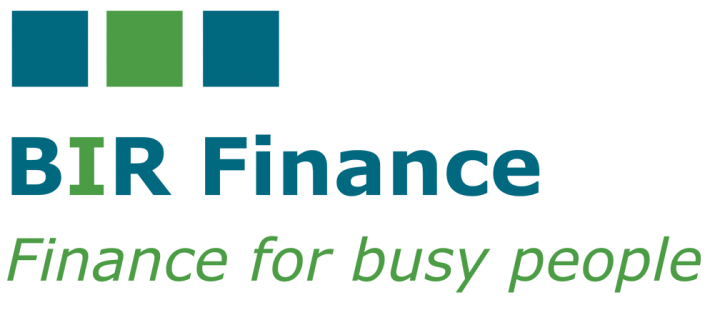1. All borrowers’ circumstances are not the same
In today’s fluid world, nearly all borrowers have different histories of work, credit experience, income, households, expenses – and the list goes on.
For this reason, the advertised ‘low rates’ being advertised by a lender might only apply to a small percentage of the borrower market: for example, those borrowers in a steady job which they have held for more than 3 years with a steady income and low expenses and no unnecessary credit debt (and definitely no Buy Now Pay Later loans!)
Example: Self employed are often not targeted by online lenders – they are just not ‘vanilla’ enough to be able to be processed by bots.
2. You don’t necessarily qualify for all lenders
The criteria applied by lenders when considering a loan application can vary enormously.
These days, with over 60+ lenders lending to home buyers, there is a huge range of variations in what lenders consider when assessing whether to lend money to an applicant.
The issue for most borrowers is they don’t know the details and the ins and outs of each lender’s policies.
Plus, lender’s policies are changed regularly by lenders as the macro-economic landscape changes and as their appetite for a particular market segment changes.
Example: We had a client who worked for a major bank but didn’t qualify for a loan with his employer – but we obtained a loan 50% higher with another lender.
3. You just can’t change loan products!

Yes, you heard it here first! The biggest failing for many borrowers is not understanding that even what appears to be small changes to their loan product can be seen by their lender as a completely different loan product. And with a new loan product, the lender will charge you all their upfront fees all over again. Plus, you will have to redo all the due diligence you did the first time around to make sure you ‘qualify’ for their current deal.
4. Wooed by the Cashback
They sound good and can be a nice way of starting your relationship with your lender. But, they come with their own catches – including a rate which might creep up faster than you were imagining.
Remember, nothing is for free and the major lenders make their money by borrowers looking for immediate gains and then forgetting to keep on top of the on-going costs of their loan.
5. Falling in love with the honeymoon or introductory home loan rates
These lower introductory rates can be appealing. And, borrowers can be expected to be attracted by the interest rate quoted for the first year of a contract. However, once the honeymoon period expires, the fine print will often say the rate will revert back to the lender’s standard variable rate – which can be quite a lot higher for the major lenders (their standard carded rates can be breathtakingly high).
Plus, honeymoon packages can attract early exit costs as well as monthly accounting keeping fees – all of which are ways for the lender to make back the money they are giving you on your lower initial rate.
In recent times, these honeymoon packages have been phased out in favour of cashbacks but that doesn’t mean they are gone for good. The marketing gurus at the major lenders will no doubt resurrect these offers as soon as they feel it will help boost their market share.
6. Not Checking Exit Costs
The average life of a loan is around 7 years – even though the loan term might be 30 years.
And, no surprises, there will often be exit costs when paying out a loan. Plus, lenders charge legal and preparation fees for the discharge of your mortgage and some will sneak in a service fee.
Whilst not exorbitant, these costs can be an irritant when you are looking to move on because you want to ‘save some money’. And, they can vary significantly between lenders and between loan products.
7. Not checking upfront costs
Make sure you check all the fees for getting a loan. Establishment fees, valuation fees, legal fees, the list goes on.
The important thing to note is that these fees can vary enormously from lender to lender.
8. Choosing a Fixed Rate loan product
2021 was the year of the fixed rate loan. However, the heady days of low fixed rate loans are over for a while and when the fixed rate period expires, you will be back to paying the currently available variable rate loan.
Fixed rates have less flexibility and fewer options (e.g. limited redraw and generally no offsets accounts) – so you need to make sure they are suitable for you and your cash flow. When a client wants to ‘fix’ a loan, we will ask them if they ever have any surplus cash and if so, a split loan (fixed and variable) might be a good idea so they can park their excess cash in a variable rate split with an offset facility.
Plus, fixed rate loans will have a break cost if you need to exit early (or if you wish to change loan products). The amount of this break cost will be a formula set by the lender.
9. Going Interest Only to reduce on payments (Vs Principal & Interest payments)
Interest Only is good when your cash flow is tight as the payments can be significantly lower than a Principal and Interest payment.
However, the Interest Only rates tend to be a little bit higher than P&I rates so make sure you run your numbers on both options if you are thinking of taking out an Interest Only loan product.
Interest Only is often regarded as being more attractive for Investors as principal payments are not tax deductible so it allows the investor’s principal to be utilised in other perhaps more productive alternatives. However, the logic still needs to be applied as it may be that the best short term use of an investor’s funds is to free up equity in their investment portfolio.
A nice to know: when interest rates are low, the greater the proportion of your monthly payment is allocated to your principal repayment. So, when rates are low, you are trading off reducing your principal quickly Vs lower overall payments.
10. To have or not to have: Offsets and Redraws
An offset account is where the funds in your savings account are ‘offset’ against the balance you owe on your loan account; reducing the interest you are being charged whilst those funds are in your offset account. This is a great facility when you have variable cash flows with surpluses available from time to time as the offset account is a ’come and go’ account – as you need the funds, you withdraw them.
However, there are often annual fees associated with these facilities (around $300 is a typical figure) so you need to factor in these costs when doing your maths.
The reason why an offset is attractive is that the surplus funds, if held in a normal savings account, will earn you less interest than what you can save if the funds were held in an offset account. Plus, the interest you earn in a savings account is subject to tax whereas the savings in interest from an offset account does not impact the tax you have to pay.
A redraw facility operates similarly to an offset account but you have to physically ‘withdraw’ the funds you need and place them in your savings account in order to be able to use them. For some types of payment transactions this might be acceptable but it does not have the flexibility of an offset account ‘come and go’ benefit.
11. The cost of a Professional Package
The major lenders offer “Professional Packages which can provide better rates than their ‘normal’ customers might be paying and might include things like credit cards with rewards etc. It sounds good and it is nice to know you are regarded as a ‘professional’. But, such packages come at a cost – often an annual fee.
So, it is worth comparing these packages with an ‘everyday’ low rate offered by other lenders.
12. Loyalty sucks
Sorry to put on a dampener but that is the reality. Once you have a loan with a lender you are now just a source of recurring income. A lender makes their money from their existing customers who do nothing other than pay their loan. The upfront costs to win the customer are amortised over the ‘life’ of the loan. And whilst your loan term is probably 30 years, the average life of a borrower’s loan is often less than 7 years as most borrowers either sell then rebuy or change lenders (so your current lender has to make their money on you quickly!).
13. Not planning for your future

Every loan is created upon your circumstances ‘now’. They don’t take into account an unknown future.
However, if you know you are going to move or you know you are going to need to do a reno or knock-down and rebuild, you need to factor in these costs and the likelihood that you will need additional funds at some point in time. If you know how much you might need and when, you can save yourself a lot of heartache and stress if you plan for this upfront.
14. I can do this myself (aka not seeking an independent professional voice)
I am leaving the best to last!
When you are thinking about a loan, you should understand the time it takes and the difficulties with making sure you have done all the research you need to do so you make the right choice for you. This is where an experienced broker can help you. They have access to databases and algorithms which allow them to crunch the data from a huge panel of lenders. And, they keep themselves up to date with research on lenders and lender policies so they understand which lenders will be a good fit for you.
Before you even submit an application they will have sorted out those lenders who will lend to you and importantly, those lenders who will not lend to you. And, they will involve you in the final selection so you feel comfortable with who is going to lend you their money. (The good brokers also run your scenario by your chosen lender ‘just to make sure’ you fit).
But there is more. Great brokers check your rates regularly against your lender’s current ‘best rates’ and they offer you lots of things which are good to know on your property (e.g. free property reports) and about finance so you can make informed decisions. The list is actually much longer but you get the drift – brokers.
Would you like more information? You can ring us now 1300 989 878 or email us at moreinfoplease@bir.net.au


